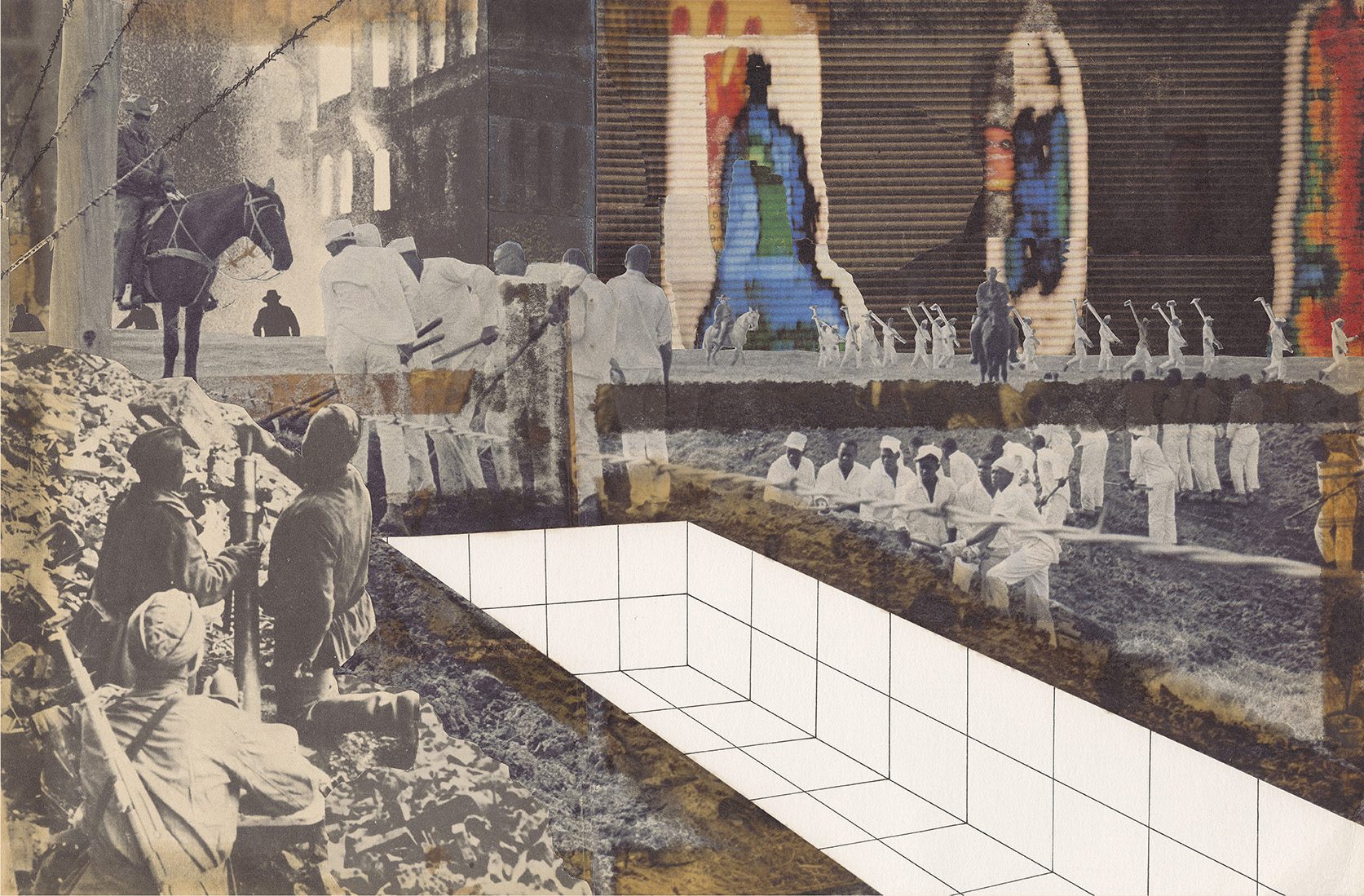Architecture has always depended on its ability to create narratives and communicate ideas. Architect and influencer Hamza Shaikh explains how social media is opening up new markets for these fundamental skills
OMA’s 1972 collage Exodus or The Voluntary Prisoners of Architecture. Drawing Matter director Niall Hobhouse says “In the urgent need to express a powerful new concept, designers are always frustrated with the technology and conventions to hand. As they ripped pages from magazines and stirred their glue pots Super Studio and OMA had to wait fifteen years for the first Photoshop programmes. With any design process the radical thinking often happens in this gap between means and ends.”
As the next generation of architecture students and young professionals emerge, so too will new cultures, practices and institutions. The graduates of the early 2000s are becoming the directors and CEOs of today, bringing with them a greater acceptance of change and innovation. The field of architecture, particularly in the UK, continues to deliver outstanding individuals and companies. However, our profession is not an easy one – and this is particularly true for graduates, who must bear the burden of poor pay and slow career progression in the most inflated of economic times. Perhaps this is why, increasingly, we are seeing a movement of architecturally-trained professionals venturing further than traditional architectural practice, where pay is often better, and their wide-ranging creative skills can be utilised. They are architects turned tech-entrepreneurs; acclaimed ateliers; material engineers; user-experience specialists; set designers; writers and historians; and filmmakers. Despite some of the failures of education in preparing students for practice, the potential it offers for wider contribution is immense.
Cohesion, a drawing from a master’s project by Eric Wong exploring the scope for a cosmopolitan and diverse British capital in a ‘truly united kingdom’. As a result of his work being seen on social media Wong was commissioned to create the virtual world “U” that provides the backdrop for the film BELLE, the third-highest-grossing Japanese film of 2021, by visionary director Mamoru Hosada, and released to great acclaim in the UK in January 2022..”
I believe that, within five years, the role of the architect will be transformed. Flexible learning paths will allow some graduates to favour traditional roles within the construction industry and others to flourish entrepreneurially. Disruptive technological innovations, such as virtual reality, artificial intelligence and rapidly evolving parametric tools, are now beginning to establish themselves in architectural workflows and services. We are in a moment of great flux.
As we continue to question our roles as architects we mustn’t forsake our rich historical foundations. Those who are influencing progression do so while standing on the shoulders of giants. In putting together two new projects, a book exploring the evolution of architectural drawings in the digital age fuelled by social media and Vanishing Points, an exhibition at the Roca Gallery in collaboration with Drawing Matter, I have been humbled and privileged to explore revelatory work from those before us. Vanishing Points brings drawings by contemporary practitioners into dialogue with historical precedents from the Drawing Matter archive, in a bid to show how masters of the past also used drawings to demonstrate architectural imagination and how their work continues to influence this generation of creatives.
From the elegant formality of Mies van der Rohe, to the painterly compositions of John Hejduk; from a hand-drawn plan by Le Corbusier, to a comical sketch by James Gowan, our value as practitioners has always rested not just on our ability to design and produce buildings, but on our role as visionaries, story-tellers and problem-solvers, and our ability to communicate thoughts, dreams and ideas.
Visualisation by Ehab Alhariri, an architect/ designer/digital artist, based in Washington DC, USA, who shares his digital hand-sketches and designs with more than 117,000 followers on his @archihab Instagram page.”
It is no coincidence that millions of practitioners and students are flocking to social media and being inspired by architectural illustrators, influencers and practitioners pushing the boundaries. These are individuals, collectives and practices who are breaking the mould, unbound by the chains of gatekeeping forces – free to express their truths and build their brands. The skills attained whilst creating and curating compelling architectural visions are critical for survival in a cut-throat industry. It’s what helps the new generation stand out as having ideas and creativity to contribute to practice, not just as underpaid administrative labour. It’s what makes us unique and increases the value of our offering. Drawing attention, or more specifically, communicating artistic expression, is our greatest asset, and we must never lose this.
Hamza Shaikh’s hybrid drawings use an array of traditional and digital drawing techniques including graphite, acrylic paint and ink, as well as digital collage paired with AI technology. The merging of mediums speaks to his artistic interests too which aim at developing a new visual language for sacred architecture. He sees his architectural art as an expression of his own identity, ‘Where East meets West, everchanging, complex and at times confused, but searching for harmony in the divine’.”

Mies van der Rohe’s radical response to the 1922 competition for Berlin’s first skyscraper, next to Friedrichstrasse station, communicated the new and untested idea that a supporting steel skeleton would be able to free exterior walls from their loadbearing function, anticipating the steel-and-glass skyscrapers that now dominate cities across the world.
Vanishing Points: Architectural Imagination in the Digital Universe, is running at the Roca Gallery London from 9 February to 29 July. Hamza Shaikh’s book ‘Drawing Attention – Architecture in the Age of Social Media’ will be published by RIBA Publishing and Routledge on 1 March 2023.
Source: Architecture Today





